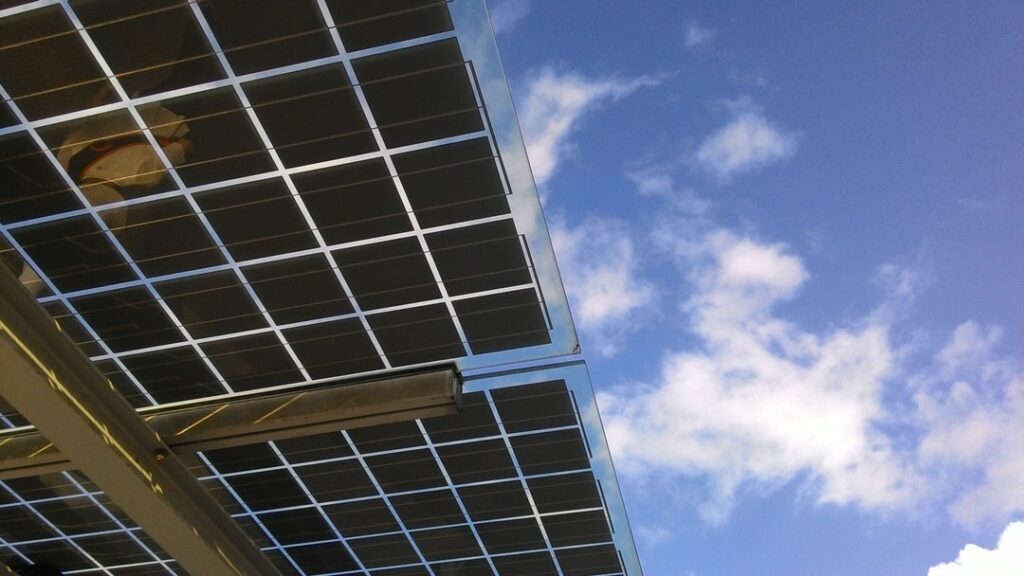
How Does Solar Energy Work?
Maybe you’ve been looking for ways to save on your home energy bill. You’ve heard all about solar energy but you’re still trying to decide if solar panels are worth it.
You can read more from 4 Solar Estimates about the history of solar energy and how does solar energy work. Consider these facts before you invest a single dime.
How Does Solar Energy Work?
Solar energy works by harnessing the sun’s energy and transforming it into electricity for a home or business. The sun releases bundles of energy called photons that travel over 90 million miles from the sun to Earth every 8.5 minutes.
Solar panels are made with silicone and another material called Photovoltaic (PV). When the sun’s photons shine on the PV panels, the photons generate an electrical current.
This current flows through the panel and carries the current through many panels called a solar array. The more panels you have, the more energy you will generate.
Solar panels work best on a roof that measures at least 200 square feet. Rooftops should be from any chimney or tree shadows.
Houses facing in the south, southwest, or southeast direction in sunny states will work best to produce the most energy. Visit Energy.gov to see how much sun your state gets.
What’s a Solar Farm?
A solar farm, also called a solar field or solar park, is a large piece of property that contains many acres of connected solar panels. Solar farms aim to collect vast amounts of solar energy all at once.
A solar farm’s design captures large-scale energy generation that feeds directly into a solar grid, as opposed to individual panels that power an individual building or home.
History of Solar Energy
The history of solar-powered technology dates back to the 7th century B.C. Humans used solar power to light their fires by reflecting the sun’s rays onto a shiny object. In the 3rd century B.C., the Romans and Greeks harnessed sunlight with mirrors to light torches for their religious ceremonies.
In 1839, Alexandre Edmon Becquerel, a French physicist, discovered the photovoltaic effect. He noticed that he could generate electrical currents when he exposed platinum electrodes to a light.
AT&T Bell Laboratory built the first solar batteries in 1954. These batteries were made of silicon strips that captured electrons from the sunlight.
Later, Bell Laboratory created solar cells. These solar cells were made with silicon semiconductors that converted light into electricity.
The US Congress authored the Public Utility Regulatory Policy Act (PURPA) in 1978. This act created incentives for independent power companies to connect to their local utility distribution system.
Later that year, Congress passed the Energy Tax Act (ETA.) This initiative urged homeowners to save energy and invest in solar technology.
In 1993, Pacific Gas and Electric Company built the first grid-supported photovoltaic system in California. Grid-supported photovoltaic systems are tied to a local utility company.
How Do You Calculate Solar Costs?
The utility company calculates your solar costs based on how many kilowatt-hours (kWh) of electricity you use. Your rate is going to vary depending on where you live.
With solar installation, you are basically installing a power generator attached to your house that provides your own electricity. This generator replaces the powerplant that supplies electricity to your utility company.
Homeowners who pay high electricity rates to utility companies will save the most when they switch to this new system.
How Much Does a Solar Installation Cost?
Investing in solar energy for your home can offer you many economic as well as environmental benefits. But as with all investments in your home, solar energy should be researched to make sure it’s a viable choice for you.
This information can help you determine if your expense for the equipment today is higher or lower than the amount you plan to pay for electricity further down the road. Equipment prices and installation costs will vary depending on the solar company you choose.
Take advantage of those companies that offer a free quote. Then you’ll find the right price and quality for your home.
How Do You Finance a Solar Panel System?
Solar panel systems aren’t cheap. A six-kilowatt panel system — a typical size for most residential homes — costs between $16,000 to $21,000. If you don’t have the cash to buy these panels upfront, you may consider solar loan options to maximize your savings.
Another financing tool that’s also available to you includes a power purchase agreement (PPA) or a solar lease. A PPA or lease allows you to rent out your solar panel system from leasing companies.
Your home receives the energy that the solar panel generates while the solar leasing company receives a tax break as well as other financial incentives.
Governmental Home Solar Financial Credits or Incentives
As a homeowner, you can claim a federal tax credit for up to 30% of your solar installation costs when taxes come due. Some states will offer an extra personal tax credit for your home solar panel system.
Do some homework today. You can find what incentives and credits states offer on this database of incentives for renewables and efficiency.
What Are Your Next Steps?
When the time comes to talk to the solar pros, call companies who have their North American Board of Certified Energy Practitioners certification. Let them give you their presentation and answer your questions on how does solar energy work.
Check out what incentives your state will give you for installing this equipment today. Don’t hesitate to contact us for a free estimate. With a carefully researched plan in hand, you are guaranteed to maximize any savings.
Leave a Reply